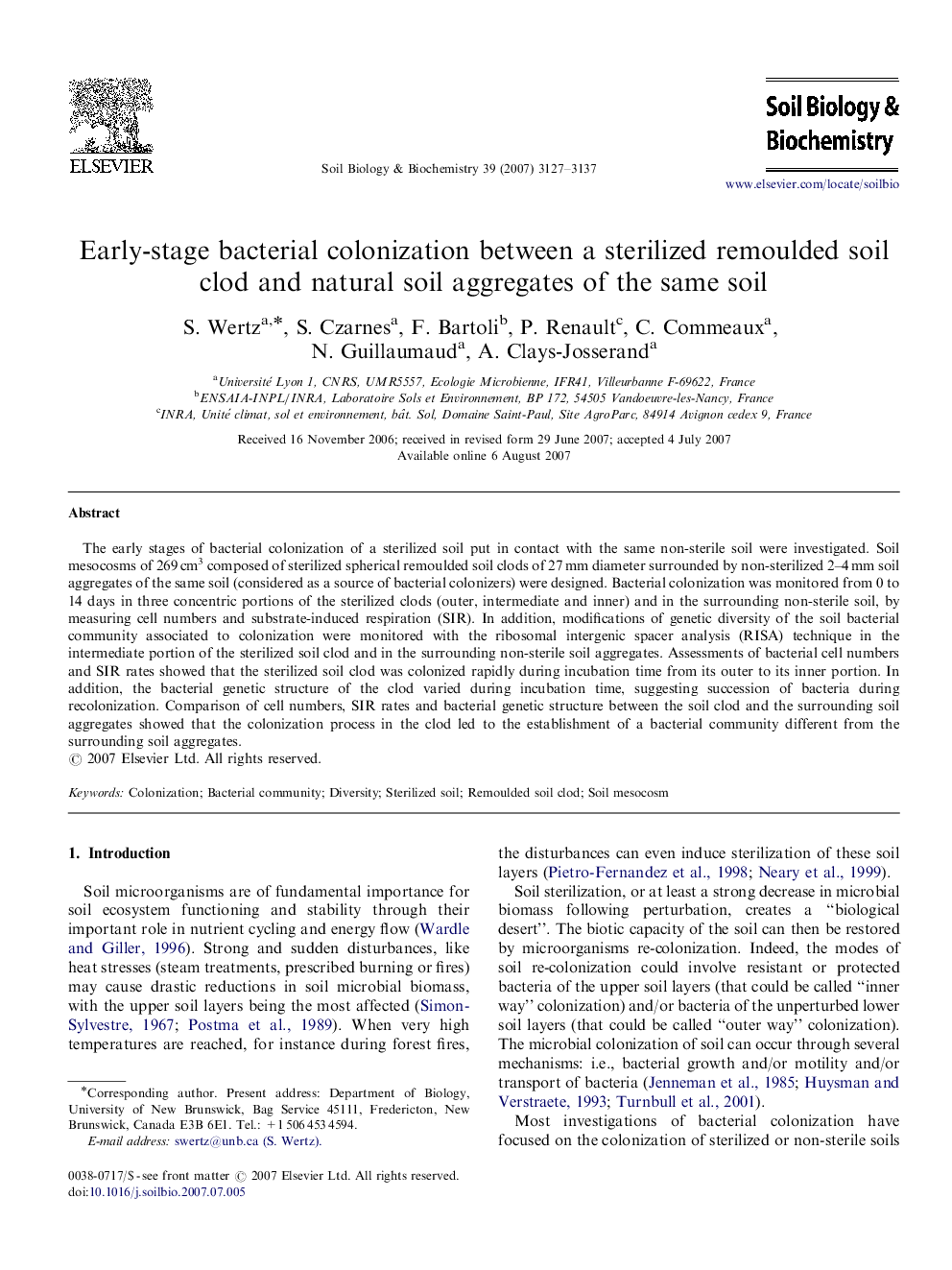| Article ID | Journal | Published Year | Pages | File Type |
|---|---|---|---|---|
| 2025553 | Soil Biology and Biochemistry | 2007 | 11 Pages |
The early stages of bacterial colonization of a sterilized soil put in contact with the same non-sterile soil were investigated. Soil mesocosms of 269 cm3 composed of sterilized spherical remoulded soil clods of 27 mm diameter surrounded by non-sterilized 2–4 mm soil aggregates of the same soil (considered as a source of bacterial colonizers) were designed. Bacterial colonization was monitored from 0 to 14 days in three concentric portions of the sterilized clods (outer, intermediate and inner) and in the surrounding non-sterile soil, by measuring cell numbers and substrate-induced respiration (SIR). In addition, modifications of genetic diversity of the soil bacterial community associated to colonization were monitored with the ribosomal intergenic spacer analysis (RISA) technique in the intermediate portion of the sterilized soil clod and in the surrounding non-sterile soil aggregates. Assessments of bacterial cell numbers and SIR rates showed that the sterilized soil clod was colonized rapidly during incubation time from its outer to its inner portion. In addition, the bacterial genetic structure of the clod varied during incubation time, suggesting succession of bacteria during recolonization. Comparison of cell numbers, SIR rates and bacterial genetic structure between the soil clod and the surrounding soil aggregates showed that the colonization process in the clod led to the establishment of a bacterial community different from the surrounding soil aggregates.
